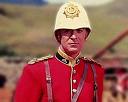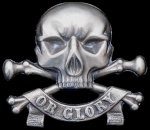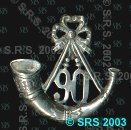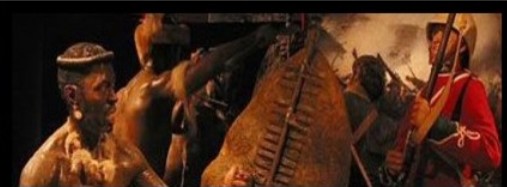| Latest topics | » The Pictorial World - March 15th 1879 Yesterday at 1:13 pm by ben2000 » The lost diary of Pvt James Owen Thu Jul 25, 2024 12:03 pm by miklew » Last of the 24th at Isandhlwana Wed Jul 24, 2024 6:16 pm by John Young » What was the uniform of field marshals/generals in the zulu war? Mon Jul 22, 2024 6:53 am by John Young » Henderson and the NNH at Rorke's Drift  Sat Jul 20, 2024 12:17 pm by SRB1965 » Capt. D. Hayes 1/3rd Regt., NNC Thu Jul 18, 2024 11:11 am by Julian Whybra » The Wrecked Camp Wed Jul 17, 2024 4:33 pm by Julian Whybra » Private N/N John Robert Branch 90th Regiment and his discovered diary Mon Jul 15, 2024 8:53 pm by 1879graves » Private John Scott 24th Regiment a fugitive at large Sun Jul 14, 2024 12:06 pm by 1879graves » 90th foot sgt T. Collins 214 Sun Jul 14, 2024 10:57 am by johnman » Baron Von Steitencron Wed Jul 10, 2024 3:10 pm by Julian Whybra » Sgt Joseph Windridge, Defender of Rorke's Drift - Memorial Tue Jul 09, 2024 3:15 am by 90th » Writing advice Sun Jul 07, 2024 4:04 pm by Julian Whybra » South Africa 1877-79, 1 clasp, 1877-8-9 (4389 Fr. Sergt. S. Smith. O/2. Bde. R.A.) Sun Jul 07, 2024 9:30 am by rai » The trashing of the Zulu monument to the brave warriors at Isandlawana March 12, 2024 has been blamed on scrap metal scavengers. Thu Jul 04, 2024 7:41 pm by ADMIN» The Goodwill Zulu Festival: Celebrating the Welsh and KwaZulu Natal Shared Heritage. Thu Jul 04, 2024 7:27 pm by ADMIN» Any nominal role of G Coy 2/24th regiment  Thu Jul 04, 2024 11:18 am by Wayne » Bassage Diary Thu Jul 04, 2024 9:31 am by Julian Whybra » Prior to Sihayo's Kraal  Thu Jul 04, 2024 9:19 am by 90th » British Fort Locations Thu Jul 04, 2024 3:40 am by 90th » Sergeant 1064 Tom Hick / Hicks G Company 2/24th Regiment Wed Jul 03, 2024 11:05 am by Julian Whybra » A Hungarian soldier in the Zulu War (?) Fri Jun 28, 2024 2:31 pm by Mr M. Cooper » Private 25B/279 Henry Sears Bugler E Company 24th Reg. KIA Isandlwana Thu Jun 27, 2024 1:07 pm by gardner1879 » Hamilton Browne's birthday Fri Jun 21, 2024 9:22 am by Julian Whybra » Zulu "Corps" Thu Jun 20, 2024 6:01 pm by Hobbes » Army Pay Department Personnel Thu Jun 20, 2024 11:49 am by Julian Whybra » Ntshingwayo birth date Sun Jun 16, 2024 11:37 am by Hobbes » Zibhebhu and Cetshwayo's family Wed Jun 05, 2024 9:11 pm by Julian Whybra » Smith's Store/Hotel Wed Jun 05, 2024 6:06 pm by Julian Whybra » Corporal James Frowen Williams F Company.  Tue Jun 04, 2024 5:20 pm by Julian Whybra » Shaka iLembe Sat Jun 01, 2024 1:27 pm by Jon84 » Bugler 1415 Thomas Finn / Flin 90th Regiment  Sat May 25, 2024 11:28 am by johnman » Inspector-General Evelyn Richard Hugh Pollard Tue May 14, 2024 10:13 am by ADMIN» Alfred Fairlie Henderson photographs. Sat May 11, 2024 8:01 am by Julian Whybra » Fairlie's Native Police Thu May 02, 2024 9:12 pm by Hobbes |
| July 2024 | | Mon | Tue | Wed | Thu | Fri | Sat | Sun |
|---|
| 1 | 2 | 3 | 4 | 5 | 6 | 7 | | 8 | 9 | 10 | 11 | 12 | 13 | 14 | | 15 | 16 | 17 | 18 | 19 | 20 | 21 | | 22 | 23 | 24 | 25 | 26 | 27 | 28 | | 29 | 30 | 31 | | | | |  Calendar Calendar |
|
| Top posting users this month | |
| New topics | » The Pictorial World - March 15th 1879 Yesterday at 1:13 pm by ben2000 » The lost diary of Pvt James Owen Thu Jul 25, 2024 12:03 pm by miklew » Last of the 24th at Isandhlwana Wed Jul 24, 2024 5:53 pm by miklew » What was the uniform of field marshals/generals in the zulu war? Sun Jul 21, 2024 12:30 pm by darthvaix » Henderson and the NNH at Rorke's Drift  Fri Jul 19, 2024 1:29 pm by SRB1965 » Capt. D. Hayes 1/3rd Regt., NNC Wed Jul 17, 2024 10:52 pm by Julian Whybra » The Wrecked Camp Sun Jul 14, 2024 8:51 am by 61MECH » The trashing of the Zulu monument to the brave warriors at Isandlawana March 12, 2024 has been blamed on scrap metal scavengers. Thu Jul 04, 2024 7:41 pm by ADMIN» The Goodwill Zulu Festival: Celebrating the Welsh and KwaZulu Natal Shared Heritage. Thu Jul 04, 2024 7:27 pm by ADMIN |
| Zero tolerance to harassment and bullying. | |
Due to recent events on this forum, we have now imposed a zero tolerance to harassment and bullying. All reports will be treated seriously, and will lead to a permanent ban of both membership and IP address.
Any member blatantly corresponding in a deliberate and provoking manner will be removed from the forum as quickly as possible after the event.
If any members are being harassed behind the scenes PM facility by any member/s here at 1879zuluwar.com please do not hesitate to forward the offending text.
We are all here to communicate and enjoy the various discussions and information on the Anglo Zulu War of 1879. Opinions will vary, you will agree and disagree with one another, we will have debates, and so it goes.
There is no excuse for harassment or bullying of anyone by another person on this site.
The above applies to the main frame areas of the forum.
The ring which is the last section on the forum, is available to those members who wish to partake in slagging matches. That section cannot be viewed by guests and only viewed by members that wish to do so. |
| Fair Use Notice | | Fair use notice.
This website may contain copyrighted material the use of which has not been specifically authorised by the copyright owner.
We are making such material and images are available in our efforts to advance the understanding of the “Anglo Zulu War of 1879. For educational & recreational purposes.
We believe this constitutes a 'fair use' of any such copyrighted material, as provided for in UK copyright law. The information is purely for educational and research purposes only. No profit is made from any part of this website.
If you hold the copyright on any material on the site, or material refers to you, and you would like it to be removed, please let us know and we will work with you to reach a resolution. |
| | | A most interesting profile of John Hayward the Executive Consultant in the Medal Department at Spink |  |
| | | Author | Message |
|---|
24th

Posts : 1862
Join date : 2009-03-25
 |  Subject: A most interesting profile of John Hayward the Executive Consultant in the Medal Department at Spink Subject: A most interesting profile of John Hayward the Executive Consultant in the Medal Department at Spink  Sun Oct 11, 2009 4:55 pm Sun Oct 11, 2009 4:55 pm | |
| 1879Graves / 90th I think you will find this interesting.
Executive Consultant in the Medal Department at Spink, is to appear in the next issue of 'The Journal of the Victoria Cross Society'. Written by Brian Best, the article focuses on the many Victoria Crosses with which John has been associated during his
long career. Extracts from the article are reprinted below:
'After serving in the Royal Air Force, John left his Ipswich home to come to London, where he joined the Royal Mint. Here he pursued his interest in collecting British coins. Later, he turned to collecting medals and
decorations, which at that time was the Cinderella of numismatics. Initially he specialised in Distinguished Service Order (DSO) groups, which were then available for little outlay and amassed a 50-strong collection. This included a DSO group to an officer of the 21st Lancers who charged at Omdurman for which he paid the princely sum of £25!
After two years at the Royal Mint, John decided to convert his hobby into a business. He had already begun in a small way along the Portobello Road, but now decided to devote himself full-time to this activity and quickly
concluded that he should find a more suitable location in central London. John first found office premises in Empire House, 175 Piccadilly and then two years later, through the good offices of a prominent coin dealer, he moved into a dealer's shop at 17 Piccadilly Arcade. By this time he was building up a formidable collection of Royal Air Force gallantry groups an he was to use the jewel of this collection - the Victoria Cross to Flying Officer Lloyd Trigg - as a deposit against the lease. Fortunately he was able to reclaim it after just one year's trading. Perhaps this was an omen, given that Victoria Crosses were to play such an important part in John's career.
No 17 Piccadilly was in an ideal position, situated not far from the main coin and medal dealers and auctioneers, such as Glendining, Sotheby and Spink. Among the many stories John recounted about his early years in business, is that of the occasion when a major dealer offered him the VC group to the Irish Guards hero John Kenneally. Second World War VCs were rare on the market at that time and the only way to secure the item was for John to dispose of half his DSO collection. With the promise that the VC would be held for him, John managed to complete the disposal within a fortnight, only to find that the promised group had been sold in the interim. He recalls that this crushing blow provided him with an even greater incentive to take on the competition.
During our conversation, John often contributed some interesting asides to our VC theme. He recalled that in his early years medals, usually from the Great War, were often to be found in pawnbrokers. Most old soldiers wore their medals on their waistcoats and often pawned them still attached. This got us talking about how some heroes - officers and other ranks - fell on hard times. This was the case with Major Raymond Willis, known as 'Walking Stick' Willis, who rose to command his regiment. The Depression of the 1930s, in particular, hit many veterans, including Willis, who was reduced to selling matches on the streets of Manchester. Like many others in his situation he was forced to sell his VC. Later a replacement was claimed on the grounds that his original was 'irretrievably lost'. The original did come into John's possession at one stage. Since then it has passed through several hands and was auctioned not so long ago for £75,000, and is now on display at the Imperial War Museum (north). (See The Journal of the VC
Society, March, 2003)
John produced his first medal catalogue in October 1966. By the standard of other sales lists of that period, The Gazette as it was called, was pretty revolutionary, as not only did it list the numismatic details of the awards on offer, but also included biographical and service details of the medal recipients. Although we now take for granted this depth of information, it was not always so, it was not even particularly unusual at the time for medals to be advertised without even the recipient's name or unit. Increasingly, collectors wanted the story behind the medal and the established firms were obliged to follow Hayward's example.
John began to advertise for medals in national newspapers and this brought in a steady supply. He was helped, albeit inadvertently, by the fact that his competitors were not greatly interested in the more modern awards. This rather hidebound attitude and emphasis on Napoleonic period awards and Victorian campaign medals left a relatively clear field for John to acquire, for example, Distinguished Conduct Medals, Military Medals and other scarcer twentieth century pieces which he saw, as it turned our correctly, as having great market potential. His acquisition of such items was often spoken of patronisingly by established circles as 'Hayward's speciality'. Additionally he was also able to acquire many of the fine classic items much prized by
other dealers.
In response to his three-quarter page advertisements in the national press John tells of the occasion a dignified gentlemen came into the shop with a large bag full of foreign orders. He had been very well connected and had worked with the Royal Family and with Sir Winston Churchill. In the course of his duties, he had, as a matter of protocol, been awarded a decoration by each country he had visited in his official capacity, but had found little opportunity to wear them. Hence he had decided 'to thin them out'!
On the subject of Victoria Crosses, the very first The Gazette (1966) contained as its main item the Zulu War Cross pair to Private Thomas Flawn, 94 Regiment, which was offered at £865. To illustrate the comparative
availability of Victoria Crosses at the time, the following appeared in The Gazette in quick succession:
January 1967 Lord Gifford Ashanti War £1000 (this had turned up in the drawer of a desk sold at auction 'with
contents').
March 1967 Major R.R. Willis Gallipoli £950
April 1967 Private R.M. Beatham France 1918 £700
June 1967 Private R. H. Burton Italy 1944 £1250
September 1967 Sergeant J. Hogan France 1914 £785.
There followed a fallow year before The Gazette offered its next VC, that to Lieutenant Henry Lysons of Zulu War fame. Six months later the exceptional Indian Mutiny VC/DCM group to Colour Sergeant S. Garvin, 60th Rifles was offered for £1500, a very high price at that time. As the demand for VCs gathered momentum, so invariably prices rose. This is illustrated by a glance at copies of The Gazette during the early 1970s:
August 1971 Joseph Kellaway Crimea, Royal Navy £2100
October 1971 Sergeant Major Peter Gill Indian Mutiny£1850
An exceptional pair of Light Brigade Charger VCs soon followed:
June 1972 Sergeant Joseph Malone Crimea £2600
June 1972 Troop Sergeant Major John Berryman Crimea £3350.
The difference in price between these two Crimea VCs is accounted for by the fact that Berryman also served in the Zulu War 1877-79. The benchmark price for VCs during the following year remained around the £2000 mark. The VC to Lieutenant Thomas Orde Lauder Wilkinson, killed at La Boiselle on the fifth day of the Battle of the Somme , sold through The Gazette for £2,200. In relation to this sale, John made the interesting
observation that at the time little was made of the location of Wilkinson's gallantry, whereas today an item associated with the Somme would be far more emotive and therefore have an enhanced value. That year John Hayward also sold two George Crosses - the GC to Corporal T. Atkinson, Green Howards sold
for £900 and that to LAC M. Campion, RAF went for £925.
The same year was memorable for another more sinister reason. A petrol bomb was pushed through the letterbox of 17 Piccadilly. Fortunately it was dealt with before the damage became considerable. The culprit was never found, although John does have his own private theories.
The last Victoria Cross to be offered through The Gazette was in October 1974, when the Gallipoli VC group to Sergeant W. Cosgrove brought £3300. Gradually VCs became thinner on the ground and those that did surface were more usually sold privately to regiments and museums. There were some regular private collectors, perhaps the most significant of whom was Jack Stenabaugh of Canada, who had over 20 VCs at one time.
By this time John himself had a collection of 19 Victoria Crosses, but did not keep them for too long. One day he was reading the letters sent by the mother of a posthumous VC winner, killed on the first day of the Somme when he was overtaken a strange sensation. 'It didn't feel right' John explained, and he experienced an overwhelming conviction that the medals should not belong to him but to those closer to the recipient. Within a short time, John sold his entire VC collection and never again sought to own another.
The 1970s was a very interesting decade for medal collecting. At Sotheby Michael Naxton was developing the VC market through the auction house. John, in tandem with his medal dealing, was reprinting a stream of unobtainable standard reference works essential for medal research as well as producingsome new titles. Long out-of-print classics like Mackinnon and Shadbolt's Afghan War 1878-79 and The South Africa Campaign of 1879 made a welcome reappearance, as did O'Moore Creagh and Humphris' The Victoria Cross 1856-1920. One original Hayward publication in my collection that has become a well-thumbed over he past 30 years is Honour the Light Brigade by Cannon William Lummis and Kenneth Wynn.
In June 1979, John closed 17 Piccadilly Arcade and took a sabbatical from medal dealing for a couple of years. In 1982 he was tempted back to the mainstream by an approach from Christie's, the auctioneers, who sold orders, decorations and medals on the back of their coin auctions, and therefore were very much in second place to Sotheby. Christie's numismatic auctions were ripe for development, hence with John on board as Consultant, the first medal-only catalogues were produced as the number and quality of lots
immediately began to improve, with the result that the Coin and Medal Department increased its turnover for medal sales dramatically. During the 1990s there was a spate of changes. Christie's bought Spink & Son Ltd. In the reshuffle John moved sideways to Spink, where he still operates as their Executive Consultant.
I then asked John about the background to some of the more famous Victoria Cross sales and he began with the strange tale of John Chard and his VC. Lieutenant John Chard, Royal Engineers commanded the beleaguered garrison at Rorke's Drift against an overwhelming force of Zulus on 22 January 1879. In
1964, the film Zulu, which dramatised the battle, was released and has remained popular ever since. When Chard's pair of medals was offered at auction in London in 1972, it was described in the catalogue as the Zulu War Campaign Medal and 'cast copy' VC. The Chard family were mortified after being told that the VC was not genuine, especially since they were sure it had never left the family. Certainly its appearance gave rise to some doubt. It was coated in black ink and just didn't look the part. In good faith, after examination, the Cross was declared a copy.
The actor Stanley Baker, who played Chard in the film, successfully bid for the medal at £2700 with John Hayward as underbidder. At the time John thought this was a hell of a price to pay for a Zulu War medal, even to Chard. On Baker's death a few years afterwards, his widow sold the pair, after which it changed hands several times before being lodged at Spink for safe-keeping. Here it was decided to get the metal tested scientifically to remove any element of human error. The Cross was sent to the Royal Armouries where it was subjected to spectroscopic analysis to determine its metallic characteristics, thus establishing a sort of metallurgical DNA. The tests revealed that this so-called 'cast copy' had a similar metal content to other authentic Victoria Crosses of that particular period. Despite this confirmation of it being genuine, Chard's VC would inevitably attract careful scrutiny if it were ever to be offered for sale due to its fascinating history. However, it would perhaps not be going too far to say that arguably this most famous VC is now priceless. John confided that he believes he can tell a 'genuine' VC by its appearance and feel. He commented that during the casting of a Cross, the medal might emerge from the die in a condition which only required a little extra work. Others might not be so crisp and needed much cleaning and chasing to bring them to the required standard. John said that he had seen three Afghan War 1878-80 VCs which would have benefited from being finished in a more diligent fashion. Interestingly these were cast about the same time as Chard's VC.
I then asked John about the famous VC to William Speakman sold at auction in 1982 when John purchased it for £20,000. On examining the Cross, he noticed that Speakman had added a faintly scratched 'Hill 317' - the feature he had so gallantly defended in Korea. The group eventually found its way to the Scottish United Services Museum through the generosity of Jack Stenabaugh, where it is on display today. John stated that as the number of Victoria Crosses reaching the market dwindles, most are now sold by private treaty. The reasons for this include that families would prefer to avoid publicity and may wish to have more control over the sale. A recent sale saw the proceeds going towards the establishment of a scholarship fund'. |
|   | | 1879graves

Posts : 3379
Join date : 2009-03-03
Location : Devon
 |  Subject: Re: A most interesting profile of John Hayward the Executive Consultant in the Medal Department at Spink Subject: Re: A most interesting profile of John Hayward the Executive Consultant in the Medal Department at Spink  Sun Oct 11, 2009 5:57 pm Sun Oct 11, 2009 5:57 pm | |
| Hi 24th
Many thanks for the info, it was a very intresting read. John has touched so many famous VC's, I would just like to touch one.
Thanks again. 1879Graves |
|   | | 90th

Posts : 10890
Join date : 2009-04-07
Age : 68
Location : Melbourne, Australia
 |  Subject: medal dept spink. Subject: medal dept spink.  Mon Oct 12, 2009 1:15 am Mon Oct 12, 2009 1:15 am | |
| hi 24th.
Very interesting and enjoyable read.
cheers 90th. |
|   | | | | A most interesting profile of John Hayward the Executive Consultant in the Medal Department at Spink |  |
|
Similar topics |  |
|
| | Permissions in this forum: | You cannot reply to topics in this forum
| |
| |
| |
